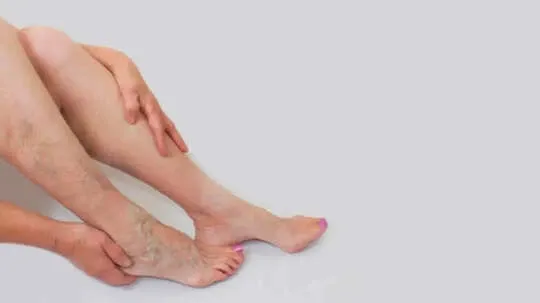Varicose veins are swollen and engorged blood vessels that bulge just under your skin's surface. They lead to blue or purple bulges that usually appear in your legs, feet, and ankles. Doctors say that in some people, varicose veins can be painful and itchy, forming spider-like lines.
While you may not like the way varicose veins look or feel, they are mostly not dangerous for most people. However, in some cases, they do lead to serious health issues, like blood clots.
Why do varicose veins happen?
Doctors say varicose veins are more likely to develop as you age, but if you have weakened valves in your veins, you can get this condition even in your teens. Estimates say the varicose veins are extremely common and affect 30 to 50 per cent of adults. However, a few risk factors include:
- Family history of varicose veins
- Obesity and being overweight
- A job that requires a lot of standing for long hours
- Pregnancy
- Long-term use of birth control pills
- Hormone replacement therapy
- People who use tobacco products are more likely to develop varicose veins
Doctors say varicose veins occur when the walls of your veins weaken. As blood pressure in your vein increases, the weakened walls allow your vein to become bigger, stretching them. As your vein stretches, the valves that keep blood moving in one direction in your vein are not able to work as they should. The sluggish blood then backs up or pools, leading your vein to swell, bulge, and twist.
What are the serious complications of varicose veins?
Even though it is not a condition that causes complications, for some people, untreated varicose veins lead to ulcers or open sores, bleeding, inflammation, or skin discolouration. Severe varicose veins are a sign of chronic venous insufficiency, which makes your veins unable to pump blood to your heart.
If you have varicose veins, you can also develop blood clots, so it is important to tell your doctor about varicose veins so they can evaluate and monitor you for clotting disorders. These include:
- Superficial thrombophlebitis, which forms blood clots inside varicose veins
- Deep vein thrombosis, which is a blood clot in a deep vein in your body
- Pulmonary embolism is a life-threatening condition that requires immediate treatment.
How can you fix varicose veins?
While there is no cure for varicose veins, there are many treatments you can seek to feel better. A few ways to fix it include:
Elevation
Make sure to elevate your legs as much as you can to increase blood flow and decrease pressure in your veins.
Elastic stockings
Wear supportive stockings or compression socks that reduce discomfort and ensure smooth blood flow.
Injection therapy
Also known as sclerotherapy, it happens with a solution injected into your vein, causing the veins to stick together. Eventually, your vein turns into scar tissue and fades away.
Laser therapy
This minimally invasive procedure, known as endovenous thermal ablation, uses a catheter to close off a damaged vein.
Ambulatory phlebectomy
In this procedure, the doctor would make multiple cuts or punctures in your skin next to the varicose vein and tie off and remove one section of vein at a time.
Vein surgery
